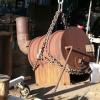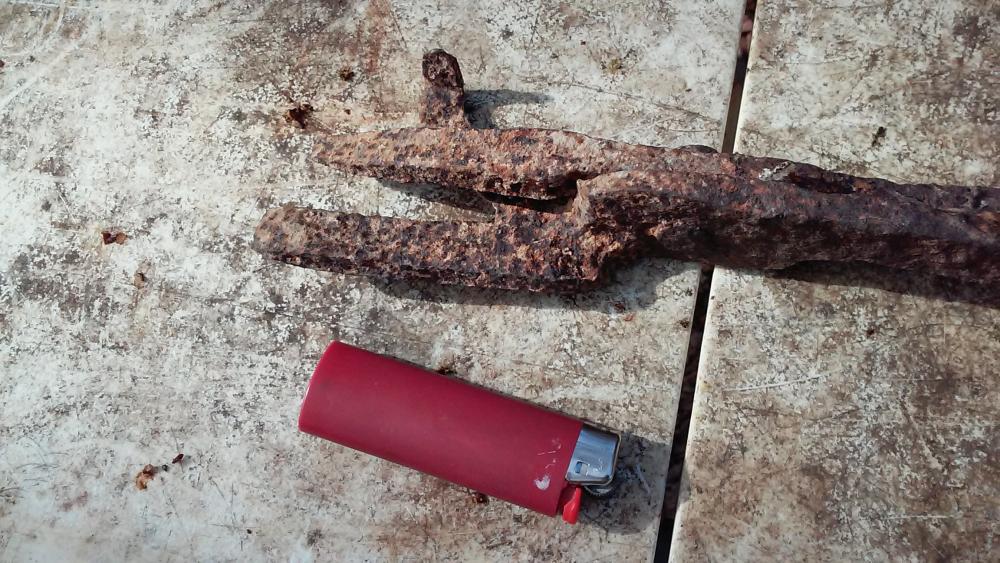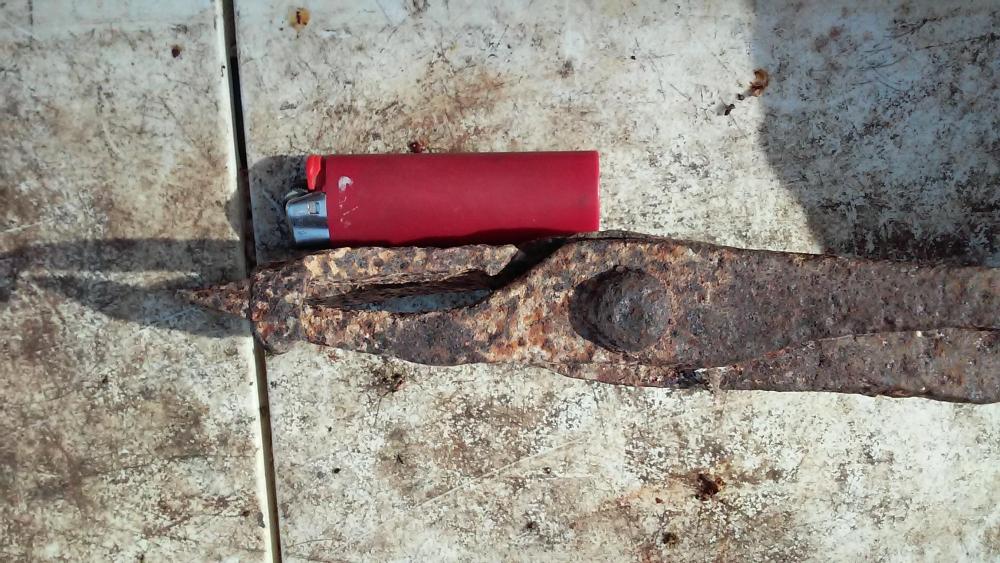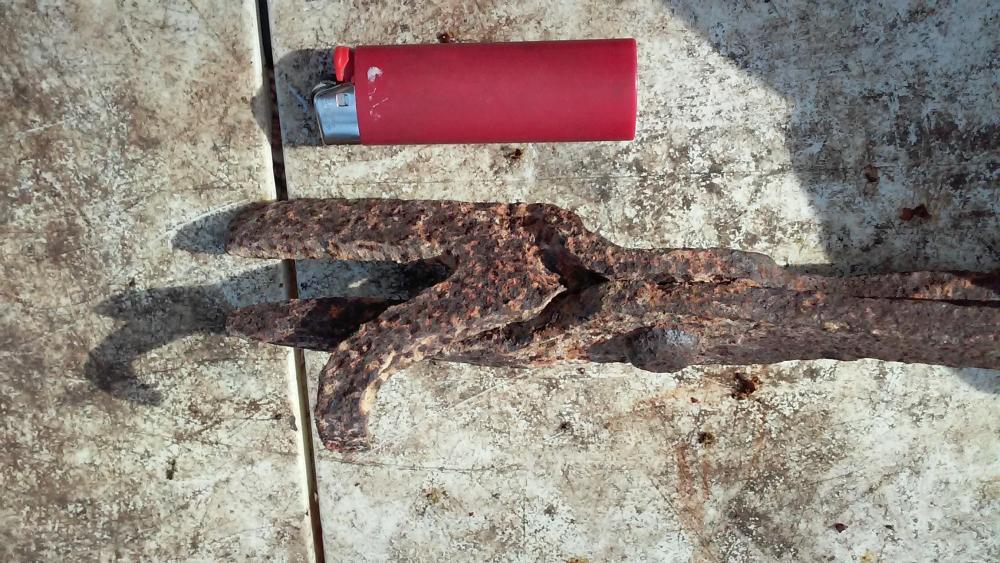
zombieresponder
Members-
Posts
29 -
Joined
-
Last visited
Profile Information
-
Gender
Male
-
Location
North Texas
-
Interests
Too many to list.
Recent Profile Visitors
1,991 profile views
-
Lot easier to resharpen that lathe bit than a dovetail cutter too.
-
Purpose of these tongs?
zombieresponder replied to zombieresponder's topic in Tools, ID, and pictorial reference
You might be onto something there. They just might fit some of the small cultivator points I've seen. -
Not complicated....you'd very likely set the vise at an angle(or the part at an angle in the vise) if you were to cut a tapered dovetail on a mill...why wouldn't you do the same on a shaper? <===machinist
-
-
Thanks for the input fellas. It's the time of year that has me concerned about finding lump charcoal. It's usually available during spring and summer when everyone is grilling, but I don't recall seeing it any other time. I'm going to look, just for grins, but even if I don't find any it won't be a problem. I found a place an hour or so away that has coal. Gotta check their hours to see if I can make it down there on a Saturday morning.
-
Milling machines???
zombieresponder replied to Diays Creek Forge's topic in MIlls, Milling machines, etc
The last bridgeport I worked on(repair, not machining) had a "made in singapore" sticker hidden behind the head. Never would have known it was there if I hadn't had to pull the head off to repair it. I thought the wells index I ran was a better machine than a bridgeport....it seemed heavier built and more rigid. I didn't mean for it to read as though I advised against buying a bridgeport, just that the name shouldn't be the main criteria in selecting a mill. Bench top mill = drill press with "repeatable" x/y, and very rarely, z axes. I would find an industrial radial arm drill and a good x/y table to use long before I'd ever consider a bench top mill. -
The first part is sort of correct. There are no SAE thread pitches that coincide with metric. A couple are very close, but not close enough to match. The second part is correct. Usually one or more gears can be changed to allow the machine to cut metric threads. You should be able to find that information in the manual for the machine, although it's also sometimes on the inside of the cover on the side of the headstock. It's possible that you could find generic gears(or gear blanks) with all of the correct specs except maybe a little boring/keyway cutting or facing the gear to the correct thickness.
-
Milling machines???
zombieresponder replied to Diays Creek Forge's topic in MIlls, Milling machines, etc
I have run quite a few bridgeports, along with a few other brands. It's easy to just say "buy a bridgeport", but many are well used and may not be worth the investment. A toolmaker I used to work with had a profitable machining business on the side, and he used JET machines. He did say they didn't have the longevity of bridgeports, but otherwise they were a good enough machine. Most of the bridgeport knockoffs I've run were used hard before I touched them, so I can't comment on how well they held up....about all I can say is that they were still capable of making good parts if a person knew how to work around the limitations/quirks. I don't think replacement parts were easily available, if at all, for some of them. The bridgeports aren't a problem to find parts for, unless perhaps you stumble upon a very old machine or an oddball. I recommend you find an old machinist or toolmaker to look over whatever machine you're considering before you hand over any money. Anyone that's spent 8+ hours a day making parts on one for a living is going to know pretty quick if the machine is used up, or just used. As an example, the owner may tighten up the gibs to try to hide wear. That sort of thing is readily uncovered by cranking the axes to their extreme limits. Typically most of the wear will be in the center of the travels, so it will be easy to crank there and then become more difficult as you near the ends of the travel. If it's really loose in the middle and tight on the ends, you might even it out by just replacing the gibs....but it could also(and probably does) have a fair bit of wear on the ways, and that is only correctable by rescraping the ways. Since I'm already commenting on this, I'm going to add that you should be protecting your machine tools from dust and grit, especially grinding dust. The ways will last much longer if kept clean and properly oiled(engine oil is not way lube). -
Howdy all. My nephew has been watching the forged in fire series and wants to try his hand at forging a knife with his grandfather. They were going to try it on a charcoal grill, but I have an extra(no sentimental attachment) riveter's forge pan and a couple of other things I'm going to loan them instead. I'm thinking that they will either need lump charcoal or wood for fuel, and not the briquettes I believe they were planning on using. Am I correct, or would briquettes work as well? I've got no experience, thus my question. I can also supply them with wood if needed, but lump charcoal may be difficult to find. I don't know of any place around to get coal...the last fellows I talked to said they ordered theirs. Thanks in advance, and I'm going to direct them here to the forum as well.
-
Hardening 4140 for Tenon work
zombieresponder replied to Burnttoast's topic in Heat Treating, general discussion
Most 4140 will be in the normalized state...that is to say that it's not hardened. Some of it comes pre heat treated though, which we use pretty often at work. Usually only 28-32 HRC, so it's still relatively easy to machine. -
Too much heat for too long while exposed to oxygen. Seen a few parts come out of the heat treat ovens like that when the stainless foil had a hole in it.
-
Tempering 4140 at 350F doesn't accomplish anything other than some slight stress relief....if it's held at temp long enough(2 hours per my Crucible books and every other source I've checked). Tempering at 450 will only knock maybe a point or two of rockwell C hardness off. Water is fine to use as a quench liquid for thicker sections of 4140. I would definitely add some dish soap to the water though, to keep it from boiling away from the steel surface as quickly. I can only recall doing heat treat/tempering on 4140 once....all other heat treating I've done has been on tool steels(A2/D2/H13/etc.). If you are unsure about the taper, then verify that two sides are parallel. Clamp those sides in the vise, then use an indicator(dial test type) on the dovetailed surface to determine the amount of taper(if any) from end to end. Then repeat on the other side. Your machinist brother should understand what I'm getting at. The other way to measure external dovetails is with two pieces of round stock. I've seen people use drills(same size), but precision ground shaft or drill blanks are much better. Put the round stock in the "v" on each side and measure over it. A little bit of right angle trig will give you the actual measurements with this method. The same method works in reverse for measuring internal dovetails, though it's easier to use an adjustable parallel and then measure the parallel after removing it. Cock the mill head over for one angle and shim it in the vise to achieve the second angle(if required). I'd use a sine bar + indicator to set the mill head and an accurate protractor to set the angle in the vise.
-
That block with the leaf spring at the bottom right of the second picture looks a lot like an underbucking tool for a cross cut saw. Not certain of it since I've only seen poor pictures of them though.
-
Best drill bits for harder metals
zombieresponder replied to Drill Bit's topic in Drills, Post drills, Mag drills, etc
I've got a pile of inserted carbide drills, some of them brand new, that I picked up at a scrap yard a few weeks ago. There were a couple tons of morse taper shank drills, spade drills, and HSS spade inserts there as well. Found some inserted threadmills at a garage sale a couple weeks ago too. Sold the threadmills to my boss. Need to clean the other stuff up + some cat 50 holders and put it on craigslist. Anyone need any cat 45 pull studs? LOL. -
Get rid of the loose rust and then use clearcoat, as was suggested earlier.






